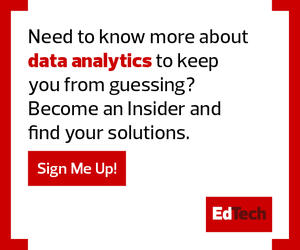This allows teachers to make education more equitable as well. “We’re hopeful that the data points we’re currently working to provide teachers are going to be those that are not only important now, but continue to help increase equity and opportunity,” says Teddy Hartman, head of privacy at GoGuardian.
He adds that making any type of educational pivot in the classroom used to take a lot of forethought and a careful analysis of the students, their behavior and academic success.
“The more the data in teachers’ hands is agile and accessible and usable, the more time teachers can spend on what they really love doing: teaching and interacting with kids,” Hartman says.
Appropriate Levels of Access Keep Student Data Safe
One of the ways educators can create positive outcomes with student data while maintaining the privacy and safety of this information is through access management. IT administrators in K–12 should be sure they are choosing tools that take access and privacy into account.
READ MORE: What is identity and access management for K–12?
By making sure that the right stakeholders have access to the right data, IT staff can strengthen the safeguards protecting students’ information.
“The way we mitigate risk is by thinking about who the personas are, who would be using that aspect of the tool and the data, and then giving access to that data to that particular role,” Hartman says. One example is different users having different levels of visibility within their unique dashboards. “If a teacher has access to valuable data, an administrator or a school counselor would see a different view of the data itself.”
Professional Development Helps Educators Make Powerful Changes
To get the most out of the available student data at educators’ fingertips, they need to know how to access it and interpret it. This requires professional development that addresses data literacy and data analysis.
“Often, teachers are left in a position where they have a bunch of data, but they don’t feel like they have the time or the expertise to be confident in leveraging it,” Aguilar says.
Instead, IT leaders and ed tech companies should be sure educators are equipped with the skills necessary to use student data in a meaningful way. This accelerates learning and spurs academic growth. “If data analysis is not embedded into how teachers go about teaching and designing their lessons, then it becomes an appendage,” Aguilar adds.
DISCOVER: How can professional development increase teacher confidence?
Additionally, this training and consideration should happen when educators have the time to engage with it. Hartman shares an example where, during his time as an English teacher, new technology was brought into the classroom in the middle of February. “I’m the middle of five classes; I had 125 students. I was a wrestling coach. I had zero time in my life,” he says.
Adding new tools or data literacy training to an educator’s to-do list in the middle of a semester with no plan to support ongoing responsibilities likely won’t result in meaningful data analysis. Instead, educators should be brought to the table where stakeholders are making these decisions to create the most positive impacts in their classrooms.











